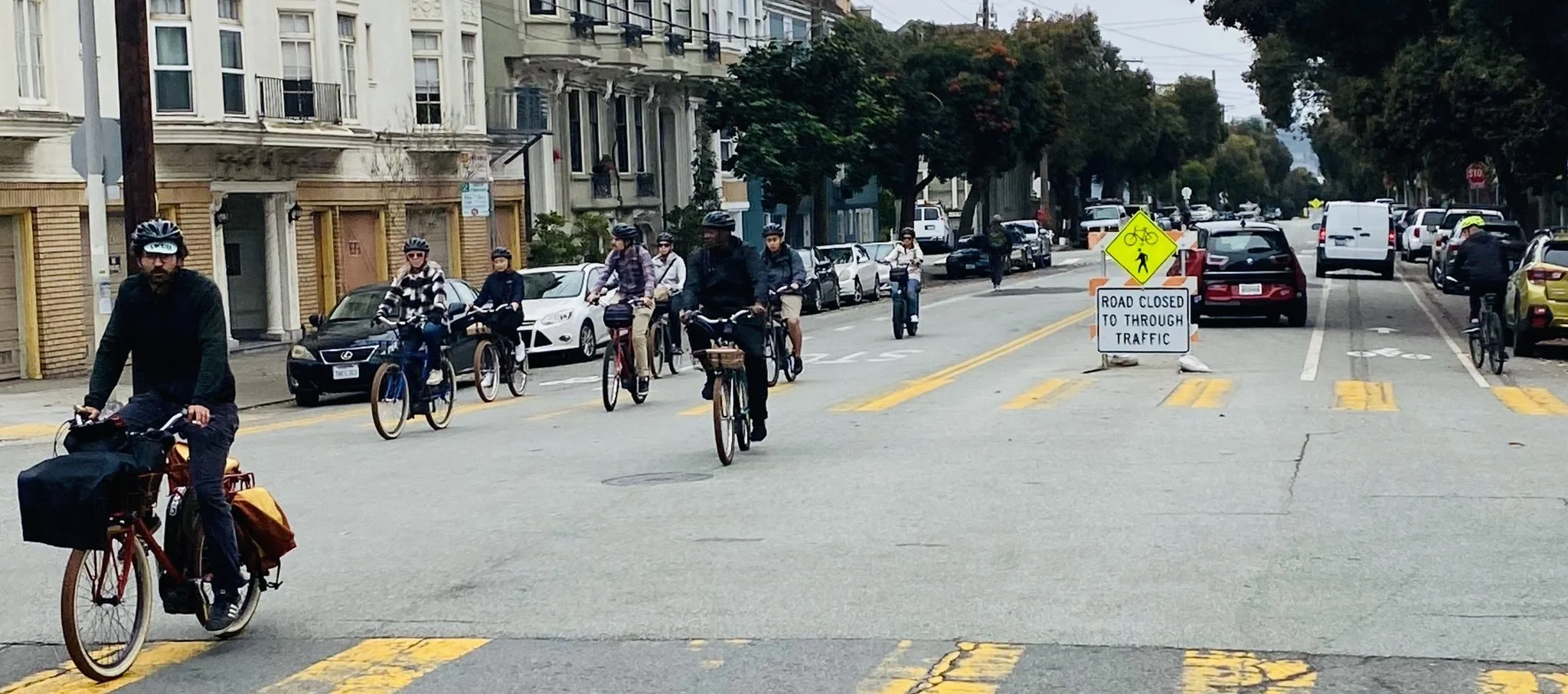Lake Street for people, not just cars
In San Francisco, decades of misguided street planning has prioritized the speed and volume of private motor vehicles over all other street users. But the pandemic opened our eyes to the fact that we don’t have to live like this—threatened and diminished by an endless flow of multi-ton machines and their noise, exhaust, and careless or distracted drivers. Why is Slow Lake critical to San Francisco?
There are a million reasons to love Slow Lake. But one that is often overlooked: Lake Street is an indispensable part of the city’s Alternative Transportation Network—a series of interconnected streets that provide safe passage for non-drivers (on cycles, scooters, one-wheels, etc.) to traverse the city. This network is our only hope, along with better transit, to get San Franciscans moving without their cars. If we fail to do that, San Francisco will only grow more clogged with automobiles.The legendary Danish urban designer Jan Gehl summed up street planning like this: “[I]f you make more road space, you get more cars. If you make more bike lanes, you get more bikes. If you make more space for people, you get more people and of course then you get public life.”Slow Lake proves it. By reducing through-traffic, Lake became safe enough to encourage hundreds to switch to biking, scooting etc., as a daily mode of transportation to get to work, school, practice, stores, friends’ houses. It brought life back to the street and reinvigorated the entire neighborhood.Does Slow Lake cause congestion on California Street?
No. SFMTA professionals have now completed two studies that establish that Slow Lake has had no impact on travel time on California Street. Instead, any increase in travel time on that street is due entirely to the California Street Quick Build project—implemented simultaneously with Slow Lake in spring 2020—which reduced four travel lanes to two from Arguello Boulevard to 18th Avenue. The point of that project was to slow down cars on California Street because of its terrible record of traffic-related injuries. And bottom line: any increase in travel time is measured in terms of mere seconds.
Fact Sheet:Why are some opposed to Slow Lake Street?
After nearly a year of debate and discussion, we have learned that in the end there is really one overriding reason: some individuals just prefer driving on Lake Street and refuse to make the minimal adjustment of driving one block over on California (or Geary Boulevard, etc.). For these selfish individuals, Slow Lake’s benefits to the neighborhood and to the city—benefits in terms of safety, climate, congestion, livability—are subordinated to their personal convenience. What can I do?
If you want to keep Slow Lake, stay engaged—and get others involved. You surely know others who love Slow Lake—but don’t know that it is in danger. So sign up two friends here (or send them this link): Let’s join forces to make our streets safer—just as residents like you banded together 40 years ago to battle motorists who opposed the installation of any stop signs on Lake in 1971. This is the next chapter. 


